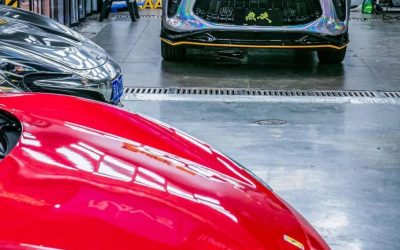The Most Valuable Component in a Car: Engine, Transmission, or Chassis? Experts Say None of the Big Three

In the final stretch of the year, the automotive market is bustling with activity, reaching the peak of sales for the entire year. Many opt to purchase cars during this time, enjoying the prestige of driving a new vehicle home for the holidays. Despite the increase in car prices, the purchase of a car remains a significant expense for most families, with even ordinary sedans coming close to a hundred thousand dollars. Many wonder why, given that car construction is not overly complex and automotive technology is highly advanced, car prices still remain high. So, which component of a car is the most valuable? Where does our money go? Let’s hear what the experts have to say.

The structure of a car is often seen as similar to that of a human. A car’s primary components are often referred to as the “Big Three”: the engine, transmission, and chassis. The engine, often metaphorically called the heart of the car, is considered the most important and expensive part by many. It provides the power source, and the vehicle’s robust performance can be attributed to its capabilities. Today, engines with robust power are predominantly from German manufacturers. Japanese car engines, on the other hand, are known for their fuel efficiency and reliability. However, experts analyze that the price of a car engine is only about 10-15% of the total car cost, making it not the most expensive part of the vehicle.
If the engine is likened to the heart, then the car’s transmission is undoubtedly its brain. The intelligence of a car’s transmission depends on how quickly it can comprehend and execute the driver’s intentions. In comparison to engine development, it’s evident that transmission development is more challenging. For those familiar with cars, the transmission is considered the core component and the most expensive part. A well-functioning transmission is crucial for a vehicle’s proper operation, as a mismatch with the engine can lead to sluggish performance, unresponsive acceleration, and noticeable jerks and vibrations. Therefore, many renowned luxury car brands focus on developing engines while directly using transmissions from specialized manufacturers. BMW, for instance, consistently employs transmissions from ZF. The cost of a car’s transmission constitutes only about 10% of the total vehicle cost, explaining why many automakers opt for external transmission suppliers.
Having covered engines and transmissions, the last of the “Big Three” is the chassis. The chassis is somewhat analogous to the limbs and torso of a human. The chassis’s role is crucial, impacting a vehicle’s comfort and safety. The chassis system includes the braking system, steering system, and suspension system, among others. If a car’s chassis is subpar, issues such as severe tilting, unclear steering, poor shock absorption, and extended braking distances can occur during driving, affecting both driving experience and safety. German and French cars have excelled in chassis development. However, the chassis is not the most expensive component of a car; its cost is only about 15% of the total vehicle price. So, with engines and transmissions discussed, what remains as the most expensive part of our vehicles?
The answer to this question is rather straightforward. When we purchase a vehicle, various taxes and fees, such as purchase tax, consumption tax, value-added tax, customs duties, etc., are included in the cost. The combined sum of these taxes and fees is, in fact, the most expensive part of our vehicles, accounting for approximately 30-40% of the total vehicle cost. Therefore, the price of taxes and fees far exceeds the prices of the highly valued “Big Three” components of the car. After this analysis, you may have a new understanding of the successful construction of vehicles.











